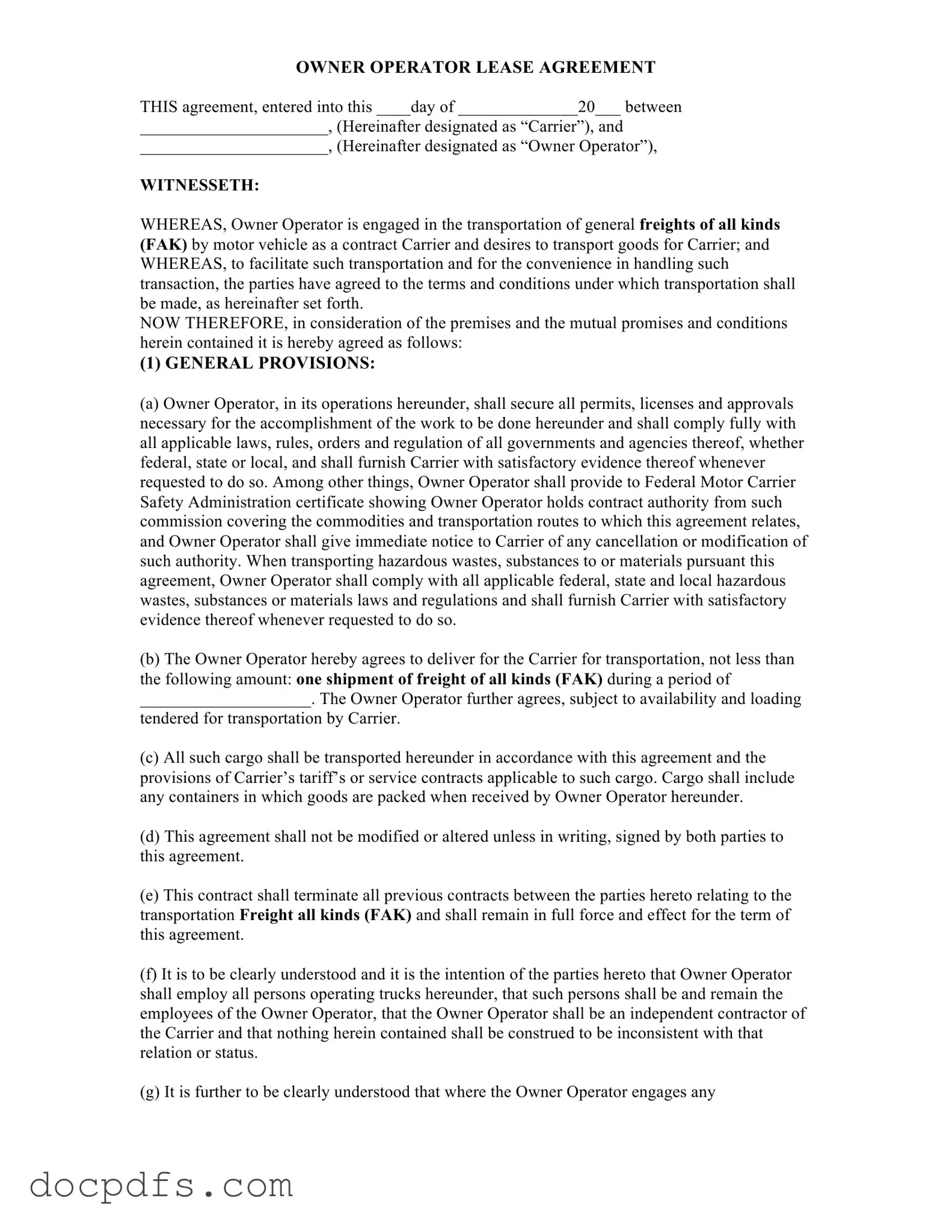The Owner Operator Lease Agreement is a critical document that outlines the relationship between a Carrier and an Owner Operator in the transportation industry. This agreement serves as a framework for the transportation of general freight, establishing the responsibilities and obligations of both parties. It begins by emphasizing the necessity for the Owner Operator to secure all required permits and licenses, ensuring compliance with federal, state, and local regulations. The Owner Operator agrees to transport a specified amount of freight and is responsible for providing evidence of compliance with regulatory standards, especially when handling hazardous materials. The agreement also clarifies the independent contractor status of the Owner Operator, highlighting that they are responsible for their own employees and subcontractors. Liability provisions are a significant aspect, as the Owner Operator must indemnify the Carrier against various potential claims, including those arising from hazardous material transport. Additionally, the document addresses insurance requirements, confidentiality obligations, and the process for handling receipts and claims related to goods transported. Overall, this agreement is designed to protect both parties while facilitating the efficient movement of freight.
